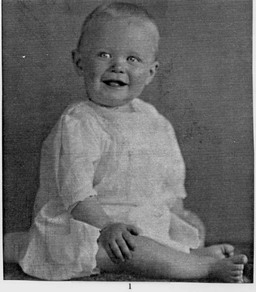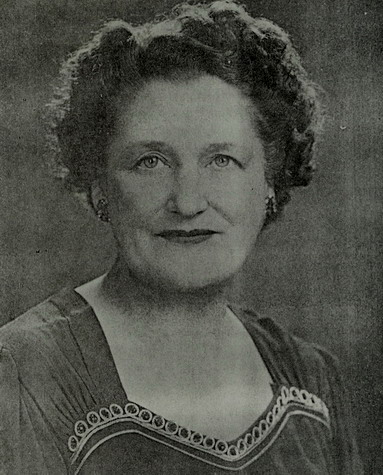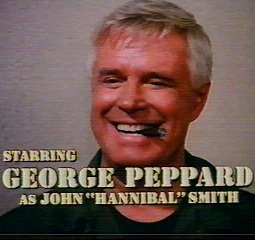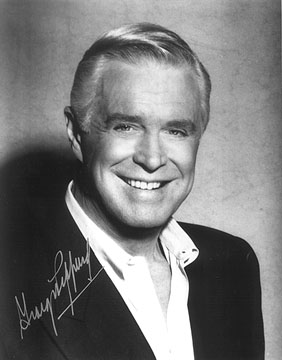 George Peppard in "Breakfast at Tiffany's" (1961)
George Peppard in "Breakfast at Tiffany's" (1961)
George Peppard
- A C T O R -
Birth: Oct. 1, 1928 | Detroit, MI USA
Death: May 8, 1994 | Los Angeles, CA, USA
A charismatic leading man in features and television for over three decades, actor George William Peppard, Jr. burst on the scene in the early 1960s as dashing, occasionally insouciant anti-her s in "Home from the Hill" (1960) and "Breakfast at Tiffany's" (1960) before finding his greatest success as the cigar-chewing leader of TV's "The A-Team" (NBC, 1983-87). Though praised by critics for "How the West Was Won" (1962) and "The Blue Max" (1966), he never surpassed the promise of his performance as Audrey Hepburn's smitten admirer in "Tiffany's," and spent much of the next two decades in forgettable features while struggling with an intense alcohol problem. The detective drama "Banacek" (NBC, 1972-74) gave him a career boost, but his turn as the devil-may-care Hannibal Smith on "The A-Team" made him a star all over again. Cancer cut his revival short in 1994, but his body of work and his dramatic personal life and struggles kept his legacy alive after his passing.
 George Peppard Jr., 1 year old
George Peppard Jr., 1 year old
George Peppard Jr. was born Oct. 1, 1928 in Detroit, MI to his father, building contractor George Peppard, Sr., and mother, Vernelle Rohrer, a light-opera singer and voice teacher.
George, Jr. graduated from Dearborn High School in Dearborn, MI before joining the Marine Corp. at the age of 17 in 1946. After reaching the rank of corporal, he left the service in 1948 and attended Purdue University, where he studied civil engineering. He was also a member of the Purdue Playmakers, which led to his stage debut at the Pittsburgh Playhouse in 1949. After acquiring his bachelor's degree from the Carnegie Institute of Technology in 1955, he moved to New York City and joined the famed Actors Studio, where he studied under Lee Strasberg. His Broadway debut arrived in 1956 in a production of "The Girls of Summer" at the Longacre Theater. That same year, he made his television debut opposite Paul Newman in an adaptation of "Bang the Drum Slowly" on "The United States Steel Hour" (ABC, 1953-55). His first feature film, "The Strange One" (1957), with Ben Gazzara - also making his film debut - as a brutal cadet at a Southern military academy and Peppard as a victimized fellow student, came a year later.

Vernelle Rohrer Peppard (mom)
Peppard returned to Broadway in 1958's "The Pleasure of His Company," which earned him a contract with MGM. Though he narrowly missed landing the Steve McQueen role in "The Magnificent Seven" (1960), he impressed with strong supporting roles in "Home from the Hill" (1960), which earned him a National Board of Review Award as the illegitimate son of Robert Mitchum and Eleanor Parker, and the all-star Korean War movie, "Pork Chop Hill" (1959). His first starring role came with "The Subterraneans" (1960), a film version of Jack Kerouac's novel of the beatnik culture in San Francisco. Universally decried by critics and the author's supporters for its sanitized approach to the source material, it was an ignoble start to his career as a leading man. Thankfully, his next picture was "Breakfast at Tiffany's" (1960), which restored his reputation in the eyes of movieg rs and theater owners alike.
 Peppard and Audrey Hepburn in "Breakfast at Tiffany's" (1961)
Peppard and Audrey Hepburn in "Breakfast at Tiffany's" (1961)
A sweet and frothy concoction from director Blake Edwards, Peppard played writer Paul Varjak, a "kept man" by wealthy widow Patricia Neal, who finds a kindred spirit in Audrey Hepburn's social gadfly, Holly Golightly. The film's mix of breezy comedy and bittersweet romance charmed audiences, and firmly established Peppard as a dashing leading man with a hint of casual cruelty behind his handsome facade. He made good on his initial promise with strong turns in the epic "How the West Was Won" (1962), as a glory-seeking farmboy-turned-lawman, and in the World War II drama "The Victors" (1963) as an American GI in postwar Germany who becomes a big player on the black market. One of his greatest successes of the period was "The Carpetbaggers" (1964), which cast him as a Howard Hughes-like figure who wreaks havoc in the lives of those around him as he becomes a movie mogul. One of his co-stars, Elizabeth Ashley, became his second wife and both endured a tumultuous marriage.
"The Blue Max" (1966) represented a sort of apex for Peppard's film career; his performance as the German flying ace who doggedly pursues the title commendation at the expense of his life, was perhaps his best, with Peppard ensuring the authenticity of the flying scenes by acquiring a pilot's license and performing many of the aerial stunts himself. But off-screen, he had also developed a reputation for being difficult with filmmakers, a situation exacerbated by a growing drinking problem. By the end of the decade, his career had dipped from major releases like the World War II drama "Tobruk" (1967) to largely unseen films like "What's So Bad About Feeling Good?" (1968), "House of Cards" (1968) and "The Executioner" (1970).
 Peppard in "The Blue Max" (1966)
Peppard in "The Blue Max" (1966)
Faced with the growing realization that his film career was in the doldrums, Peppard took on his first television series. "Banacek," which was part of the "NBC Mystery Movie" (1971-1977) rotating series, featured the actor as a Boston-based, Polish-American insurance investigator who solves seemingly impossible mysteries. Though never a ratings winner, it was popular with critics, which generated an order for a third season in 1974. However, Peppard nixed the idea as part of an attempt to prevent wife Elizabeth Ashley, with whom he was embroiled in a difficult divorce, from claiming a percentage of his pay from the series. Television remained the main source of his work in the 1970s; most notably in the short-lived series "Doctors' Hospital" (NBC, 1975-76) and the TV movie "Guilty or Innocent: The Sam Sheppard Murder Case" (NBC, 1975), in which he played the real-life doctor accused of murdering his wife. Theatrical films during this period were rare, though the post-apocalyptic science fiction thriller "Damnation Alley" (1977) and the John Sayles-penned "Battle Beyond the Stars" (1980), which cast him as a space cowboy, became cult favorites.
 Peppard as "Banacek" (1972 to 1974)
Peppard as "Banacek" (1972 to 1974)
After serving as second unit director on several episodes of "Banacek," Peppard made his filmmaker debut with the indie drama "Five Days from Home" (1979), about a man who struggles against the odds to reach his hospitalized son. Its failure at the box office preceded a lengthy fallow period for the actor, who was reduced to forgettable TV movies and even game show appearances by the end of the 1970s. However, his prickly nature again got the best of him. He was booted from a series of appearances on "Password Plus" (NBC, 1979-1982) after railing against NBC executives, and lost the chance to play Blake Carrington on "Dynasty" (ABC, 1981-89) by battling with the show's producers.
In 1978, there was one battle that George did overcome. This was a serious addiction to alcohol. This was a positive in his life and he became heavily involved in helping other folks with alcoholism and addiction try to break their habits and change their lives for the better.
 A-Team (NBC, 1983-1987)
A-Team (NBC, 1983-1987)
In 1983, he auditioned for a new action series from producers Stephen J. Cannell and John Ashley about a quartet of Vietnam vets on the lam who carry out clandestine missions for pay. Initially, James Coburn was considered for the role of Lt. Colonel John "Hannibal" Smith, but when the actor declined, Peppard was cast in the series that would provide him with a career-capping hit. A brazenly over-the-top mix of cartoon action and light comedy, "The A-Team" was a massive hit for four seasons on NBC, with Peppard clearly having the time of his life as Hannibal, whose penchant for mayhem was matched only by his love for absurd disguises and cigars. In interviews, he frequently referred to the show as the best acting job he had ever landed. It was also the first time he saw himself immortalized as a toy action figure, as the show - and especially Peppard's Mohawk-sporting co-star, Mr. T - held an intense fascination with children.
After a decline in viewership forced NBC to cancel "The A-Team" in 1987, Peppard remained active on television, most significantly in the TV movie "Man Against the Mob" (NBC, 1988), a period crime drama about a police detective who fights organized crime in post-World War II Los Angeles. A sequel, "Man Against the Mob: The Chinatown Murders" (NBC), was aired in 1989, with a third slated for production when a discovery would forever change George's life.He had smoked three packs of cigarettes a day for most of his life, which many folks do. What finally forced him to quit...was the diagnosis of lung cancer in 1992. His illness never forced his retirement from acting. However, the removal of a tumor from his lung did cause a slowdown of the actor, but Peppard kept busy and upbeat about things.
In early 1994, Peppard had been touring in theater productions of "Papa," a one-man show about Ernest Hemingway, and had been preparing for a new role and even completed the pilot episode for a series called "P.I.", which was to be a spin-off from another TV show "Matlock". This new series was to co-star Tracy Nelson and was to reprise a role that Peppard had played as a private detective named Max Morgan on an episode of Matlock in 1994.

In May of that year, Peppard was experiencing shortness of breath and would be admitted to UCLA Medical Center for testing and treatment. Unfortunately, his untimely passing came a few days later on May 8, 1994 from complications of pneumonia. He was at the age of 65. He would be returned to his home state of Michigan, where he was buried here in Northview Cemetery in Dearborn.
During his life, George Peppard was very realistic about himself and his problems. He even stated in an interview that “I was my own worst enemy” and that “Mine isn’t a string of victories. It’s no golden past. I am no George Peppard fan.
He was well-known and beloved for many years on the stage, and both large and small-screens. He is also a beloved part of our entertainment history around the world.
Because of the amount of information available online regarding Mr. Peppard, it was impossible to make this puzzle using information about him. You will need to visit his headstone in order to gather the information you will need to begin your journey to find the final container, which is *NOT* contained within the cemetery.
Nearby to the west of the Peppard headstone, you will find a marker of someone who had only a few years on this earth. The initials of this person are "CLP" and the information you will need is contained on their marker.
N 42° 18.ZYX W 083° 15.WVU
Z: second digit of their DAY of passing
Y: third digit of their birth YEAR
X: number of the MONTH of passing
W: last digit of their YEAR of passing
V: second digit of their birth MONTH
U: third digit of their YEAR of passing
Use the above information to find the next waypoint in your journey, which will give you more information in order to locate the final hiding spot of the container.
This second waypoint has an interesting and moving memorial to someone who was a mentor and educator to many, has the initials of "H.E.", and contains a six-word phrase inscribed on it (not including their name). There are a few members of this person's family also nearby but you need to look at the larger item.
You will need to count the letters from some of the words in the phrase, and do some calculations to determine the final container location.
N 42° 18.abc W 083° 15.def
You will need to count the letters in the words of the phrase, and do some calculations.
a: Count the letters in the Last word
b: Count the letters in The 3rd word, minus the 1st word
c: Total 4th word, plus 5th word, minus 2nd word
d: Count the 4th word
e: Total 6th word minus 1st word
f: Total 3rd word minus 5th word
**Remember: the final is *NOT* within the cemetery**

The final container is *NOT* contained within the cemetery.
The paper log MUST be signed to claim the smiley 
Enjoy the fun and the hunt.